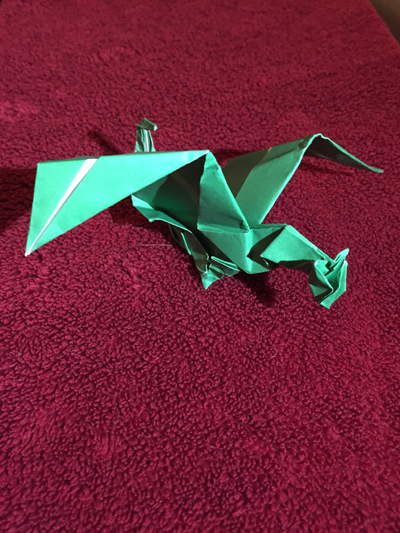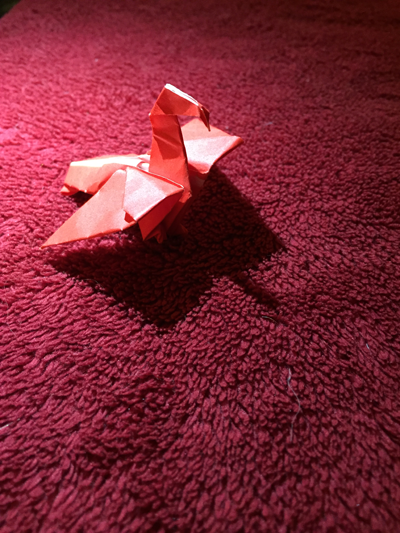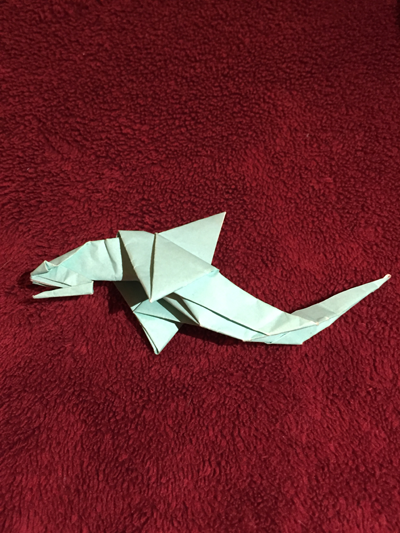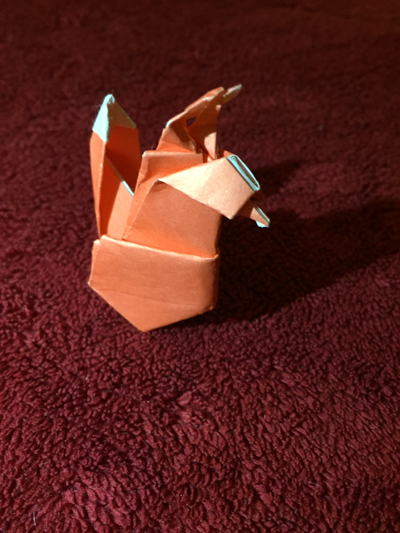Students experiment with origami

Miller designed the dragon.

Miller folds a hawk as well.
Revere High School seniors Joel Niemi and Tim Miller, as well as former Revere student David Kuo, have gained experience folding origami, and Miller has even experimented with creating his own designs.
Niemi received his first exposure to basic origami structures in the fifth grade, and he initially gained an interest, which he has maintained.
“The first structure I was introduced to was the paper crane, and I helped construct 1,000 of them . . . for a charity, but we ended up producing almost 10,000. Very shortly afterward [my friend] showed me modular origami, which is probably my favorite form. It’s basically constructing complex structures using many ‘modular’ pieces that are much easier to construct,” Niemi said.
Miller, who also began in the fifth grade, actively searched for more interesting designs to construct before he eventually decided to attempt to design his own.
“When I was about in eighth grade, I thought, ‘What if I did it my own way?’ and I started folding a bunch of stuff. My most successful design is a dragon. . . . I have been progressively developing it into something new. So I have several stages of what the dragon looks like,” Miller said.
Someone folding origami could also experiment with endless variations of more typical designs.
“Using some well-known, basic origami ‘bases,’ I have experimented in producing some models of my own design with some success. Different animals and flowers are particularly easy and fun to mess around with and I have designed many new creations . . . There are infinite possibilities waiting to be imagined, Niemi said.
Kuo’s interest grew both because of the oddity of the activity in addition to his family’s involvement in it.
“I was interested in being able to create things from paper and saw cool origami things at my relatives’ homes,” Kuo said.
Niemi believes that the variety of possibilities has caused him to remain interested in folding.
“What has kept me constantly folding over the years . . . has really been exploring the infinite possibilities of different structures and techniques. Also, improving my abilities and learning new forms and techniques and experimenting with my own designs has been very enjoyable,” Niemi said.
The focus and persistence the activity requires helps to refine other aspects of participants’ characters.
“I think I am a better person [because of origami]. I think I have a little more focus and control over my life [and] my actions,” Miller said.
The craft also can also improve the participant’s patience.
“One way that origami has really helped me is patience. Learning new techniques and experimenting with difficult structures can really tax my patience when my model did not come out the way it was supposed to. This is especially true when constructing large models that consist of hundreds of individual pieces or folds just to complete, and these projects can take many hours to complete,” Niemi said.
The Japanese art form has provided these students a unique and creative way to occupy their time.

Miller also folds a hawk.

The shark is another design Miller folds.

Miller has folded a fox as well.





